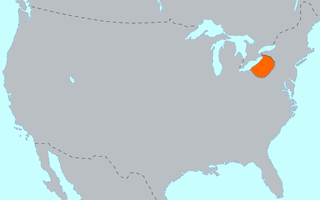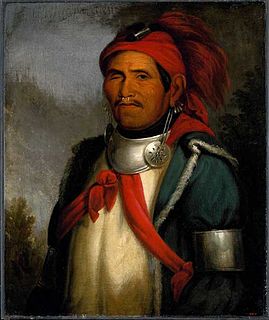 W
WThe Erie people were a Native American people historically living on the south shore of Lake Erie. An Iroquoian group, they lived in what is now western New York, northwestern Pennsylvania, and northern Ohio before 1658. Their nation was decimated in the mid-17th century by five years of prolonged warfare with the powerful neighboring Iroquois for helping the Huron in the Beaver Wars for control of the fur trade."
 W
WThe Mingo people are an Iroquoian-speaking group of Native Americans made up of peoples who migrated west to the Ohio Country in the mid-18th century, primarily Seneca and Cayuga. Anglo-Americans called these migrants mingos, a corruption of mingwe, an Eastern Algonquian name for Iroquoian-language groups in general. Mingos have also been called "Ohio Iroquois" and "Ohio Seneca".
 W
WThe Mingo people are an Iroquoian-speaking group of Native Americans made up of peoples who migrated west to the Ohio Country in the mid-18th century, primarily Seneca and Cayuga. Anglo-Americans called these migrants mingos, a corruption of mingwe, an Eastern Algonquian name for Iroquoian-language groups in general. Mingos have also been called "Ohio Iroquois" and "Ohio Seneca".
 W
WThe Moneton were a historical Native American tribe from West Virginia. In the late seventeenth century they lived in the Kanawha Valley, near the Kanawha and New Rivers.
 W
WThe Monongahela culture were a Native American cultural manifestation of Late Woodland peoples from AD 1050 to 1635 in present-day western Pennsylvania, western Maryland, eastern Ohio, and West Virginia. The culture was named by Mary Butler in 1939 for the Monongahela River, whose valley contains the majority of this culture's sites.
 W
WThe Shawnee are an Algonquian-speaking ethnic group indigenous to North America. In colonial times they were a semi-migratory Native American nation, primarily inhabiting areas of the Ohio Valley, extending from what became Ohio and Kentucky eastward to West Virginia, Virginia, Pennsylvania, and Western Maryland; south to Alabama and South Carolina; and westward to Indiana, and Illinois.
 W
WSusquehannock people, also called the Conestoga by the English, were Iroquoian-speaking Native Americans who lived in areas adjacent to the Susquehanna River and its tributaries ranging from its upper reaches in the southern part of what is now New York, through eastern and central Pennsylvania west of the Poconos and the upper Delaware River, with lands extending beyond the mouth of the Susquehanna in Maryland along the west bank of the Potomac at the north end of the Chesapeake Bay.
 W
WThe Tuscarora are a Native American tribe and First Nations band government of the Iroquoian-language family, with members today in, New York, and Ontario. They coalesced as a people around the Great Lakes, likely about the same time as the rise of the Five Nations of the historic Iroquois Confederacy, also Iroquoian-speaking and based then in present-day New York.
 W
WThe Tutelo were Native American people living above the Fall Line in present-day Virginia and West Virginia. They spoke a Siouan dialect of the Tutelo language thought to be similar to that of their neighbors, the Monacan and Manahoac nations. Under pressure from English settlers and Seneca Iroquois, they joined with other Virginia Siouan tribes in the late 17th century and became collectively known as the Tutelo-Saponi. By 1740, they had largely left Virginia and migrated north to seek protection from their former Iroquois opponents. They were adopted by the Cayuga tribe of New York in 1753.